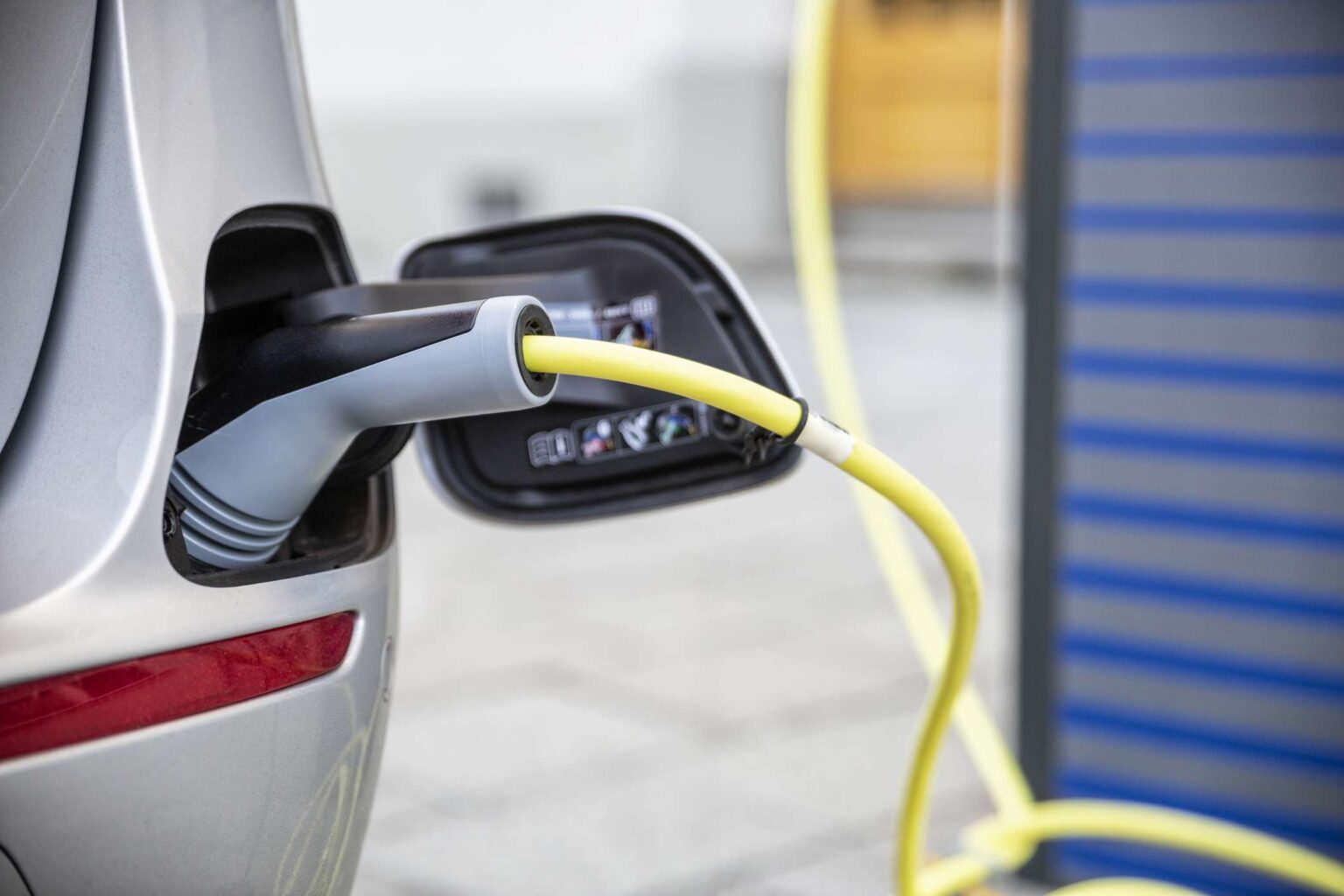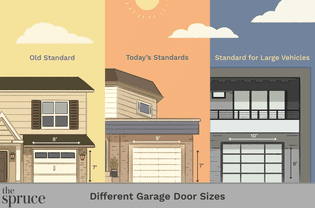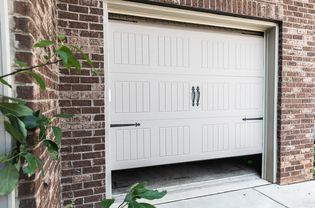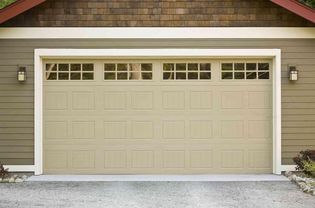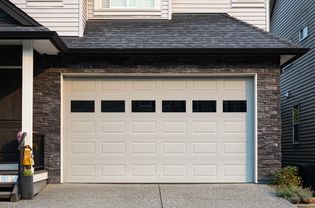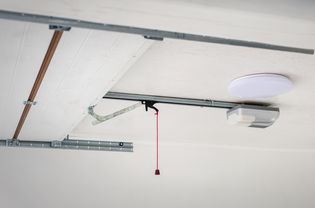Act as an expert content writer specialized in Interior Walls and Ceilings design, who speaks and writes fluently in French. Translate the article below into French. Continue writing until you finish translating the entire content from beginning to the end. Make sure the translation is linguistically accurate, and conveying the meaning, facts and figures of the original text. Make sure the content generated is well written and does not sound like a translation and reflects an awareness of the culture of French people. Don’t talk about Yourself or Your Experience. Don’t Self-reference. Don’t explain what you are doing. Write the content in HTML format and Keep the images and the structure of the article as they originally are. The article to translate:
Electric vehicles are quiet, clean, and have a longer driving range than ever before. With zero tailpipe emissions, their carbon footprint is exponentially smaller than that of gas-consuming vehicles.
Electric vehicles are the future, too. California plans to implement a ban on the sale of gas vehicles by 2035 and more states and countries are sure to follow. So whether you already own one or plan to, it makes sense to prepare your home and garage for an electric vehicle.
Why You Need an EV Charger at Home
Public charging stations are one place to charge your electric vehicle (EV). Located streetside or in retail store parking lots, hotels, car dealerships, parking garages, or at your workplace, public charging stations extend your electric vehicle’s reach.
When you’re at home, you want your EV there, too. You need it for convenience, as well as for emergencies. It can take up to 12 hours to fully recharge an EV, so having an at-home charging option is ideal for most people.
Charging your EV at home means reliable charging when you want it, without having to compete with other drivers for public charging stations. You’ll also pay a predictable electricity rate, through your home utility bill, rather than paying rates and surcharges set by the public charger.
How EV Chargers Work
Electric vehicles receive electricity from EVSE (electric vehicle service equipment), commonly known as an electric vehicle charging station. The EVSE receives its power from the home’s electrical system.
Home-based EV charging stations technically are not chargers. Electric vehicles have chargers built into them. These onboard chargers receive the Alternating Current (AC) current from your home and convert it to Direct Current (DC) power for the car’s battery pack.
To charge your electric vehicle at home, you have two options: a slower Level 1 charger that runs off of a regular 120 V outlet and a faster Level 2 charger that uses 240/208 V power. One reason commercial-grade chargers are faster than home chargers is because they bypass the onboard vehicle charger and provide DC power directly to the car’s battery.
Types of Electric Vehicle Chargers
| Level 1 | Level 2 | |
| Charging Rate | Slow | Faster |
| Range Per Hour of Charging | 2 to 5 miles per charging hour | 10 to 20 miles per charging hour |
| Voltage | 120 V | 240/208 V |
| Home Installation | Outlet is usually already available | Outlet typically needs to be installed |
| Cost Including Install | $0 to $600 | $500 to $4,800 |
| Vehicle Plug Type | J1772 | J1772 |
Level 1 EV Chargers
With a Level 1 charger, one end of the cable plugs into your electric vehicle’s charge port. The other end plugs into an ordinary home 120 V outlet.
A Level 1 charger comes as part of most EV packages, so there is nothing extra that you need to purchase. Most garages already have a 120 V outlet. If one needs to be installed, the cost ranges from $130 to $300.
Level 1 chargers are the slowest type of EV charger, charging at a rate of about 2 to 5 miles per hour.
A short overnight charge of eight hours takes the vehicle to 40 miles. A 12-hour charge gives the vehicle a 60-mile range. Since most U.S. work commutes are less than 30 minutes one-way, that’s sufficient to get to work and back, even without a mid-day charge.
Level 2 EV Chargers
With a Level 2 charger, one end of the cable plugs into the electric vehicle’s charge port. The other end is hardwired into the home’s pre-installed EVSE wall station. The EVSE is powered by a 240/208 V outlet. In some cases, the other end of the cord plugs directly into the 240 V outlet, minus the wall station.
Level 2 EV chargers charge at a rate of about 10 to 20 miles per hour. That’s more than enough to charge up for the following day at work. Given that the median range for most EVs is over 250 miles, 10 hours on a Level 2 charger is enough for most trips.
Most EVs use a J1172 or J-plug for Level 2 charging; Tesla doesn’t have this direct option, but it does sell a J1772 and CHAdeM0 adaptor, which can cost from $150 to $200.
A Level 2 EV charger requires either a hardwired electrical connection or a NEMA 14-50 outlet on a dedicated circuit. Many EV chargers up to 40 A service utilize the plug-in connection type and can be installed by the homeowner.
What About Level 3 DC Fast Chargers?
Using 480 V power, DC Fast Chargers can charge up an EV at a rate that adds up to 10 miles more per minute of charging time. Infrastructure challenges still make residential Level 3 charging impossible.
EV Charger Costs
For Level 1 electric vehicle charging, the cost to install a charging station ranges from free to around $300. Most garages already have a 120 V outlet installed. If not, a qualified electrician can install one for up to $300. If you are handy, you can install your own 120 V outlet for less than $50.
For Level 2 EV charging at home, expect to pay at least $1,500 to $1,800 for a bundled package, including the charger and electrical installation.
A 240 V, 40 A Level 2 EV charging station, attached to a NEMA 14-50 outlet with a 20-foot cord J1772 cable, starts at about $200 to $400. This type of charging station is not Wi-Fi-equipped and it has no permanent wall station. Models with Wi-Fi and a wall-mounted station cost from $500 to $800.
Garage Space Considerations
The electric vehicle charger should preferably be installed on the same side of the vehicle’s charge port and as close as possible.
- Place the EV charger within 15 to 20 feet of the vehicle’s charge port. EV cords can be as long as 25 feet, with 18 to 20 feet being the norm.
- The EV charger and the 240 V outlet should be within about 3 to 4 feet of each other.
- The charger should be at least 18 inches off of the garage floor, preferably between 42 and 48 inches high.
- Make sure that the charger is within range of your home’s local Wi-Fi network or is able to access cellular communications.
- For two EVs in the same two-car garage, mount the EV charger on a wall between the two vehicles for equal access by both vehicles.
Safety Considerations
Unless you are experienced at working inside electric service panels and adding circuits, it’s usually best to have an electrician add the 240 V outlet.
Contact an experienced electrician if you want to hardwire the EV charger. Hardwiring means that you wire the charger directly into the electrical system rather than plugging it into a 240 V outlet.
How to Install an EV Charger
For Level 1 EV charging, simply connect the cord provided by the vehicle manufacturer to a 120 V wall outlet in the garage. For Level 2 EV charging, install a 240 V outlet near the intended location of the EVSE.
-
Apply For Permits
To install a 240 V outlet in the garage or on the side of the house, first obtain a permit from your local permitting office. A plan review may be required.
-
Install 240 V Circuit Breaker
A double circuit breaker configuration needs to be installed in two adjacent open slots of the electric service panel. After installing the circuit breakers, turn the breakers to the OFF position.
-
Run Electric Cable to EV Charger Location
For 32 A or 40 A service, install 8 AWG cable to the circuit breaker. The cable can be hidden in the walls and ceiling of the garage. If the cable will be exposed on the surfaces, it must be contained within metal or PVC conduit.
-
Install 240 V Outlet
Install the 240 V outlet within a few feet of the intended charger location.
-
Attach Mounting Bracket to the Stud
Attach the electric vehicle charger’s mounting bracket directly to a stud on the garage wall.
-
Turn on EVSE
Plug the wall station into the outlet. Turn on the double circuit breakers on the electric service panel.
-
Attach Cable Holder (Optional)
Some EV chargers have a cable holder that must be installed separately. Other chargers may have a built-in cable holder.
-
How much does it cost to prepare your home for an electric car?
A Level 2 EV charger costs from $1,500 to $1,800, including installation and materials. Homeowners may may lower or much higher depending on several factors.
-
How do I prepare my garage for an electric car?
The best way to prepare your garage for an electric car is to clear one side of the garage as a dedicated space for the vehicle. At a minimum, this side should have direct access to a 120 V outlet for slow charging. Preferably, it should be close to the electric service panel for the installation of a 240 V outlet for faster Level 2 charging.
-
Do you get a home charger when buying an electric car?
Most electric vehicles come with a Level 1 EV charger that can be plugged into 120 V outlets. Most EVs do not come with Level 2 chargers.
-
Can I power my home from my electric vehicle?
Bi-directional charging, where an electric vehicle powers the home in the event of a blackout, is still in its early stages. For now, you cannot run your house off of your electric vehicle. In fact, some areas, like California, expressly prohibit backfeeding a house from an electric vehicle.




